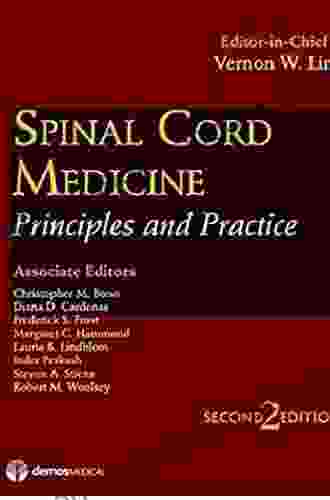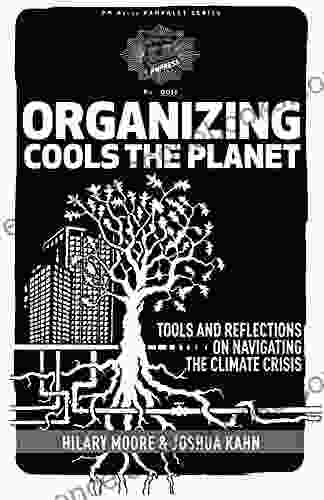Unveiling the Hidden Impact: Infrastructure Policy and Racism in an American City

Infrastructure, the backbone of any modern society, encompasses the essential systems and structures that support our daily lives. From roads and bridges to water and sewer systems, infrastructure provides the foundation for economic growth, social well-being, and environmental resilience. However, a growing body of research reveals a disturbing truth: infrastructure policy has often been a tool of racial oppression, perpetuating inequities that have shaped the fabric of American cities.
4.4 out of 5
| Language | : | English |
| File size | : | 3172 KB |
| Text-to-Speech | : | Enabled |
| Screen Reader | : | Supported |
| Enhanced typesetting | : | Enabled |
| Word Wise | : | Enabled |
| Print length | : | 262 pages |
| Lending | : | Enabled |
This article will delve into the intricate relationship between infrastructure policy and racism, exploring the ways in which infrastructure decisions have reinforced racial segregation, limited opportunities for economic advancement, and undermined the health and well-being of communities of color. We will draw upon the compelling case study of Pittsburgh, Pennsylvania, to illustrate the profound and lasting impact of racially discriminatory infrastructure policies.
Historical Context: Redlining and the Legacy of Segregation
The roots of racial inequality in American cities can be traced back to the early 20th century practice of redlining. Redlining was a systematic method of denying mortgages and other financial services to residents of predominantly Black neighborhoods. It was based on the racist assumption that these neighborhoods were risky investments, perpetuating a cycle of poverty and disinvestment that persists to this day.
In Pittsburgh, redlining was rampant. A 1937 city map created by the Home Owners' Loan Corporation (HOLC) labeled Black neighborhoods as "hazardous" and "declining," making it nearly impossible for Black residents to secure mortgages and build generational wealth. As a result, Black Pittsburghers were confined to underfunded neighborhoods with substandard housing, inadequate infrastructure, and limited access to job opportunities.
Transportation Infrastructure: Dividing Communities
Transportation infrastructure has played a particularly insidious role in perpetuating racial segregation and hindering mobility for Black communities. In Pittsburgh, the construction of major highways in the 1950s and 1960s decimated Black neighborhoods, displacing residents and creating physical barriers that isolated them from job centers and essential services.
The Crosstown Expressway, completed in 1952, sliced through the heart of the historically Black Hill District, dividing the community in two and destroying hundreds of homes and businesses. The Parkway East and Parkway West highways, built in the 1960s, further fragmented Black neighborhoods, creating barriers to access. These highways also served as conduits for white flight, as white residents moved to suburban areas, leaving behind a legacy of disinvestment and racial disparities in the city's core.
Water and Sewer Infrastructure: Neglect and Environmental Racism
Water and sewer infrastructure have also been used to perpetuate racial inequality in Pittsburgh. Historically, Black neighborhoods have received less investment in these essential systems, leading to chronic problems with water quality, sewage overflows, and flooding.
In the 1990s, Pittsburgh's antiquated combined sewer system regularly discharged raw sewage into the Monongahela and Allegheny Rivers, contaminating the water supply and posing serious health risks to communities downstream. These communities were disproportionately Black, highlighting the environmental racism that often accompanies infrastructure neglect.
Gentrification and Displacement: The New Face of Inequality
In recent years, Pittsburgh has experienced a wave of gentrification and displacement, as affluent white residents move into historically Black neighborhoods, attracted by the city's vibrant culture and revitalized downtown. While gentrification can bring certain benefits, such as increased investment and economic growth, it also poses significant challenges for low-income and Black residents.
Rising property values and rents have made it increasingly difficult for Black Pittsburghers to hold onto their homes and stay in their communities. Many have been forced to relocate to less desirable and affordable neighborhoods, further exacerbating racial segregation and eroding the social and cultural fabric of Black neighborhoods.
The Path to Equitable Infrastructure
The legacy of racially discriminatory infrastructure policy in Pittsburgh and other American cities is undeniable. But there is hope for a more just and equitable future. Activists, community leaders, and policymakers are working to address the systemic racism that has plagued infrastructure decision-making for too long.
One key step is to re-center equity in infrastructure planning and investment. This means prioritizing projects that benefit underserved communities, mitigating the negative impacts of infrastructure on these communities, and actively engaging residents in decision-making processes.
Another crucial measure is to invest in affordable housing and transit-oriented development to combat displacement and ensure that all residents have access to safe, affordable, and equitable housing options. Additionally, addressing the legacy of redlining and other discriminatory practices will require targeted investments in community development, education, and job training programs.
Infrastructure policy has played a profound role in shaping the racial landscape of American cities, perpetuating inequality and undermining the health and well-being of Black communities. The case study of Pittsburgh, Pennsylvania, provides a sobering example of the insidious ways in which infrastructure decisions have been used to divide communities and limit opportunities for people of color.
However, there is growing recognition of the need for change. By re-centering equity in infrastructure planning and investment, addressing the legacy of discriminatory policies, and empowering communities to shape their own futures, we can create a more just and equitable city for all.
Call to Action
Join the movement for equitable infrastructure policy. Contact your elected officials to demand investments in affordable housing, transit-oriented development, and community-led planning processes. Support organizations working to address the legacy of racial discrimination and promote social and economic justice. By working together, we can transform our infrastructure into a force for good, creating a more just and equitable future for all.

4.4 out of 5
| Language | : | English |
| File size | : | 3172 KB |
| Text-to-Speech | : | Enabled |
| Screen Reader | : | Supported |
| Enhanced typesetting | : | Enabled |
| Word Wise | : | Enabled |
| Print length | : | 262 pages |
| Lending | : | Enabled |
Do you want to contribute by writing guest posts on this blog?
Please contact us and send us a resume of previous articles that you have written.
 Book
Book Novel
Novel Page
Page Chapter
Chapter Text
Text Story
Story Genre
Genre Reader
Reader Library
Library Paperback
Paperback E-book
E-book Magazine
Magazine Newspaper
Newspaper Paragraph
Paragraph Sentence
Sentence Bookmark
Bookmark Shelf
Shelf Glossary
Glossary Bibliography
Bibliography Foreword
Foreword Preface
Preface Synopsis
Synopsis Annotation
Annotation Footnote
Footnote Manuscript
Manuscript Scroll
Scroll Codex
Codex Tome
Tome Bestseller
Bestseller Classics
Classics Library card
Library card Narrative
Narrative Biography
Biography Autobiography
Autobiography Memoir
Memoir Reference
Reference Encyclopedia
Encyclopedia Pam Laricchia
Pam Laricchia Marisa Rudder
Marisa Rudder Travis L Gosa
Travis L Gosa Nasira Jamal
Nasira Jamal Stewart Bell
Stewart Bell A M Myers
A M Myers Aaron Shepard
Aaron Shepard Joe Schreiber
Joe Schreiber Jason Allen Paisant
Jason Allen Paisant Thomas R Guskey
Thomas R Guskey Beth Andrews
Beth Andrews Aaron Chandler
Aaron Chandler Nelson Demille
Nelson Demille Aaron Joy
Aaron Joy Emmy Eugene
Emmy Eugene L M Bogad
L M Bogad Alex Lemon
Alex Lemon Jess Hill
Jess Hill Brian Tracy
Brian Tracy Rob Christensen
Rob Christensen
Light bulbAdvertise smarter! Our strategic ad space ensures maximum exposure. Reserve your spot today!
 Dakota PowellFollow ·15.8k
Dakota PowellFollow ·15.8k Kelly BlairFollow ·2.1k
Kelly BlairFollow ·2.1k Darren BlairFollow ·16.8k
Darren BlairFollow ·16.8k Harrison BlairFollow ·14.9k
Harrison BlairFollow ·14.9k Sammy PowellFollow ·16.7k
Sammy PowellFollow ·16.7k Ian PowellFollow ·14.3k
Ian PowellFollow ·14.3k Pete BlairFollow ·11.9k
Pete BlairFollow ·11.9k Terence NelsonFollow ·5.1k
Terence NelsonFollow ·5.1k

 Justin Bell
Justin BellUnlock National Biology Success: The Ultimate Guide to...
Mastering the Fundamentals: A Comprehensive...
 Luke Blair
Luke BlairAC/DC: The Early Years with Bon Scott – A Thunderstruck...
In the annals of rock and roll history, few...

 Darren Nelson
Darren NelsonSpinal Cord Medicine Second Edition: The Comprehensive...
The second edition of Spinal Cord Medicine...

 Cole Powell
Cole PowellArabian Horse Training: Unlock the Secrets for a...
Indulge in the captivating world of Arabian...

 Oscar Wilde
Oscar WildeRevise Curriculum For Excellence SQA Exams: The Ultimate...
The Scottish...

 David Peterson
David PetersonEndoscopic Ear Surgery: A Comprehensive Guide for...
Endoscopic Ear...
4.4 out of 5
| Language | : | English |
| File size | : | 3172 KB |
| Text-to-Speech | : | Enabled |
| Screen Reader | : | Supported |
| Enhanced typesetting | : | Enabled |
| Word Wise | : | Enabled |
| Print length | : | 262 pages |
| Lending | : | Enabled |











